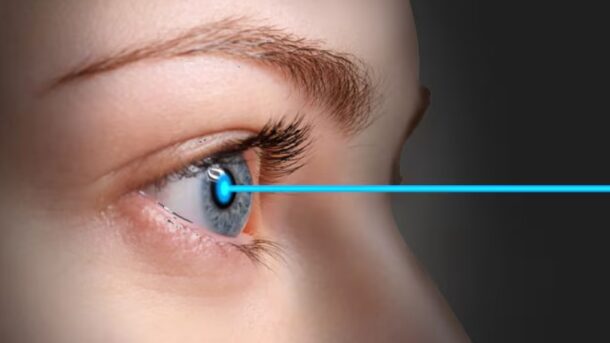Vision correction refers to various methods used to improve eyesight for individuals with refractive errors, such as nearsightedness (myopia), farsightedness (hyperopia), astigmatism, and presbyopia. These conditions occur when the eye cannot focus light properly onto the retina, leading to blurred vision. Fortunately, modern technology offers multiple solutions, including eyeglasses, contact lenses, and refractive surgery. Each method has its own advantages and disadvantages, making the choice dependent on individual needs, lifestyle, and eye health.

Types of Vision Correction
1. Eyeglasses
Eyeglasses are the most common and non-invasive method of vision correction. They consist of lenses mounted in frames that sit on the nose and ears.
Pros:
- Ease of Use: No direct contact with the eyes, reducing the risk of infections.
- Low Maintenance: Easy to clean and replace.
- Versatility: Can include features like anti-glare coatings, UV protection, and progressive lenses for multiple prescriptions.
- Fashionable: Available in various styles, allowing personal expression.
- Cost-Effective: Generally more affordable than contacts or surgery.
Cons:
- Peripheral Distortion: Thick lenses (for high prescriptions) may cause visual distortions.
- Inconvenience: Can fog up, get scratched, or break easily.
- Limited Activities: Not ideal for sports or physical activities where they may slip or fall off.
- Aesthetic Concerns: Some people dislike wearing glasses for cosmetic reasons.
2. Contact Lenses
Contact lenses are thin, curved lenses placed directly on the eye’s surface to correct vision. They come in different types, including soft, rigid gas permeable (RGP), daily disposables, and extended-wear lenses.
Pros:
- Natural Vision: Provide a wider field of view compared to glasses.
- Aesthetic Appeal: Nearly invisible, making them preferable for those conscious about their appearance.
- Activity-Friendly: Ideal for sports, outdoor activities, and professions where glasses are impractical.
- Specialized Options: Available for astigmatism (toric lenses) and presbyopia (multifocal lenses).
Cons:
- Maintenance Required: Require proper cleaning and storage to prevent infections.
- Risk of Eye Problems: Improper use can lead to dry eyes, infections (like keratitis), or corneal abrasions.
- Discomfort: Some users experience irritation, especially in dry or dusty environments.
- Higher Long-Term Cost: Recurring expenses for lenses, solutions, and replacements.
3. Refractive Surgery
Refractive surgery permanently alters the shape of the cornea to correct vision. Common procedures include LASIK (Laser-Assisted In Situ Keratomileusis), PRK (Photorefractive Keratectomy), and SMILE (Small Incision Lenticule Extraction).
Pros:
- Long-Term Solution: Reduces or eliminates dependence on glasses or contacts.
- Quick Recovery: Most patients experience improved vision within days.
- Convenience: No need for daily maintenance like contacts or glasses.
- Active Lifestyle: Ideal for athletes and individuals with demanding jobs.
Cons:
- Surgical Risks: Potential complications include dry eyes, glare/halos at night, undercorrection, or overcorrection.
- Not Suitable for Everyone: Depends on corneal thickness, age, and overall eye health.
- High Initial Cost: More expensive upfront than glasses or contacts.
- Irreversible: Surgical changes are permanent, and some effects (like presbyopia) may still develop with age.
Conclusion
Vision correction offers multiple solutions to refractive errors, each with its own benefits and drawbacks. Eyeglasses are safe and affordable but may be inconvenient for active lifestyles. Contact lenses provide a natural look but require strict hygiene and maintenance. Refractive surgery offers a long-term fix but involves risks and higher costs.
The best choice depends on individual preferences, lifestyle, and eye health. Consulting an eye care professional is essential to determine the most suitable option for clear and comfortable vision. With the right correction method, people can enjoy improved eyesight and a better quality of life.



